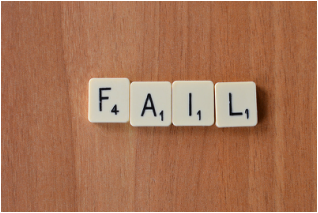Will your strategy fail?11/13/2015  I worked in strategy and planning function most of my professional career. Even when I did not have the term "strategy" in my title, I always ended up doing strategic planning in one shape or another. Sadly, over the years, I've seen many well-developed strategies that were either shelved, or even if executed, did not create the results that they were meant to. Almost all of these strategies were developed by super smart, business savvy teams. In many cases, they were the masterpieces created by the consulting teams from very well paid, well-reputed strategy consulting firms we all came to know and love. Nevertheless, they failed to deliver. As the result, I've developed a professional curiosity to come up and/or collect a set of sniff tests to predict the fate of a strategic project early on in the process. The project could be a corporate long-term plan or a sales Go-to-Market strategy, but my sniff tests work well every time. I haven't come up with them all, some I've heard from others and some I've learned by experience, but they all proven to work every time I tested them. So without further ado, here are the four Strategy Failure Sniff Tests: 1. How old is the problem?
Strategy development is essentially a problem-solving exercise. Even if you don't start with a problem, you always end up with a set of options, and the problem becomes which option is the best course of action to follow. If the underlying problem you are solving is couple of years old, meaning that you have already tried to solve that problem at least one more time, chances are your strategy will fail in the execution phase. If you have already tired to answer the same strategic question or solve the same problem, then something must have gone wrong in the execution phase. If you are not aware of that, or if you cannot articulate what has changed this time around, then chances are your strategy fails in the execution yet again another time. 2. Is the opposite of your strategy stupid? This one is my favorite, but sadly I haven't came up with it. I've learned this from Roger L. Martin's article on HBR. The idea is so simple! Take a moment and imagine the opposite of your strategy. Is it stupid? Then you will fail! Ok, confused? let's take an example: Assuming your strategy is to make your company the best workplace on earth. Then the opposite of your strategy is to create the worst workplace on earth. Assuming that you are not running a social experiment about how bad workplaces impact people's productivity, then your strategy will fail because it actually does not qualify as a real strategy. The direction you are taking is the only logical direction that you can take and that means you don't know how to get there yet. 3. Are the doers involved? This one is a real hard one to get your head around if you are working in a big corporation and your title reads something like "VP of Strategic Development" or "Director, Sales Go-to-Market Strategy". Basically you work in a function that its sole purpose is to develop strategies. In that case, chances are the people who will do the work based on the strategy are not a part of the strategy team. You and your fellow strategists have access to all the decision makers of the company and your masterpieces will be presented to them in a nicely packaged power point presentations that are only worthy of the attention of the CxO suite. If you did not start the project with the doers and haven't asked them what worked and did not work last time around you gave them a strategic direction, then you will fail. I actually recommend you join a strategy consulting company because at least you will get paid a lot more for the same doomed to fail work you are doing. 4. Does it include "No-No" section? Developing a strategy means that you will say "yes" to one specific direction and "no" to whole a lot of other directions. Every strategy document should include a section that clearly articulates what I'd like to call the "No-No" section. It doesn't need to be as dramatic as it sounds and it doesn't need a slide with the term "No-No" in the title. But rather needs a section that explains as the results of the informed choices we are making here, options "b" and "c" are not accessible to us anymore. This could be achieved easily through set of indicators to monitor, or a decision making checklist that will help saying "no" to many things and just accepting few actions that are aligned with the strategy. If you don't have it, your strategy will fail in the execution phase. There you have it! My all time four favorite strategy failure sniff tests. I might occasionally check-in back here and add more to the list. If you have other sniff tests you use to predict the probability of failing a nicely done strategy project, let me know and we can add it to the list for the sake of all of us who care about doing as much as we love planning.
0 Comments
Leave a Reply. |
© COPYRIGHT 2015 - 2023. ALL RIGHTS RESERVED.